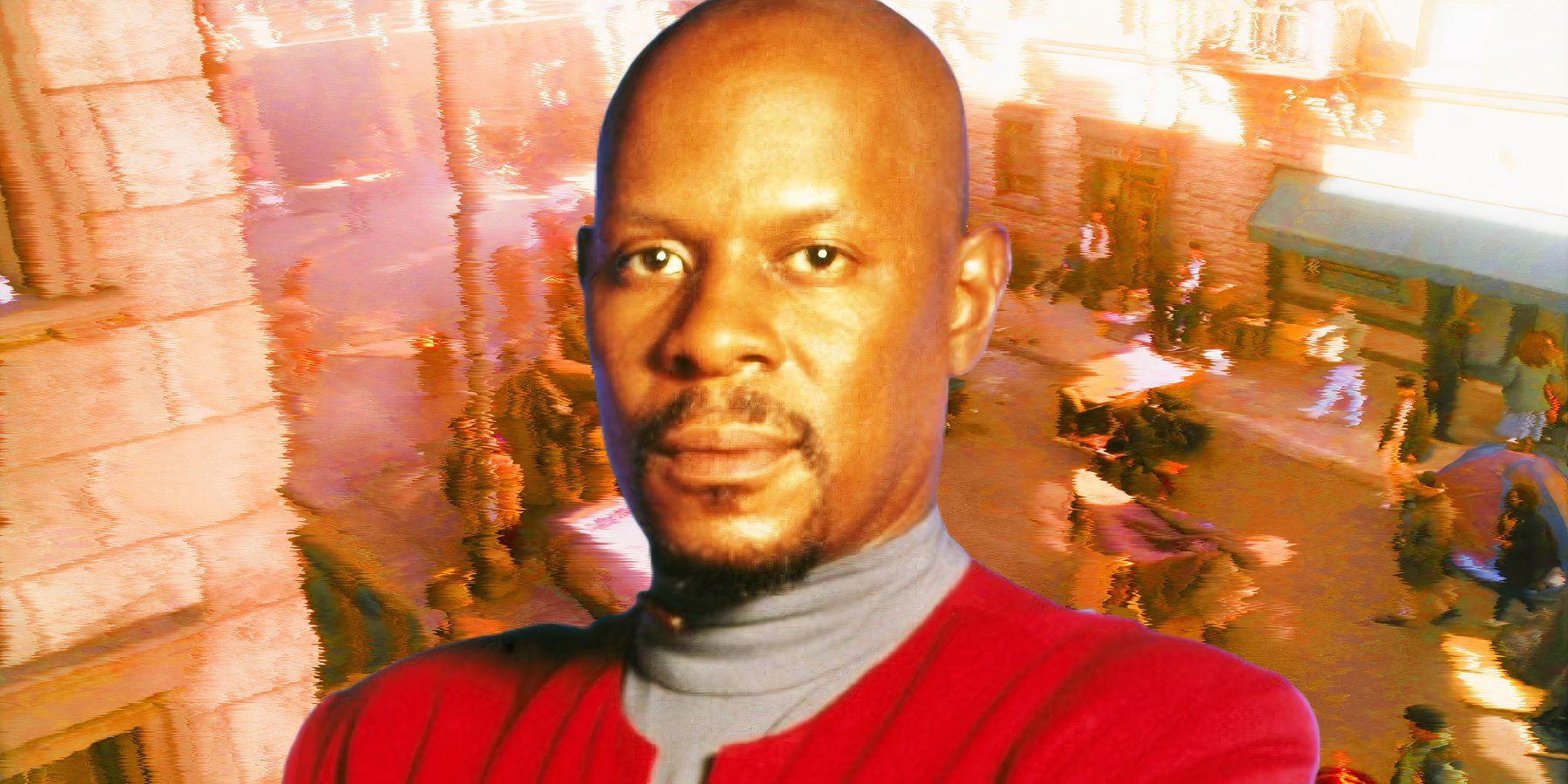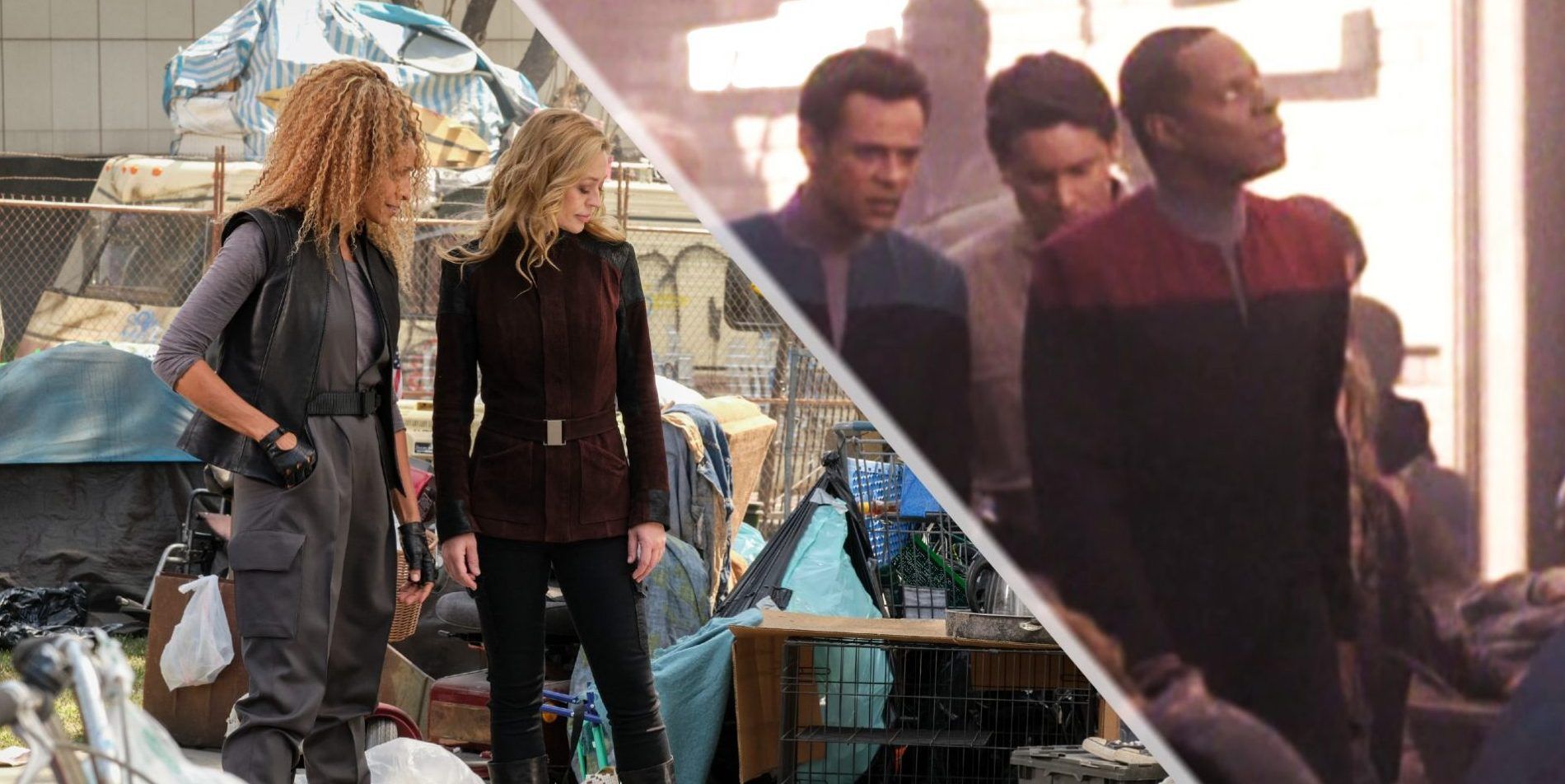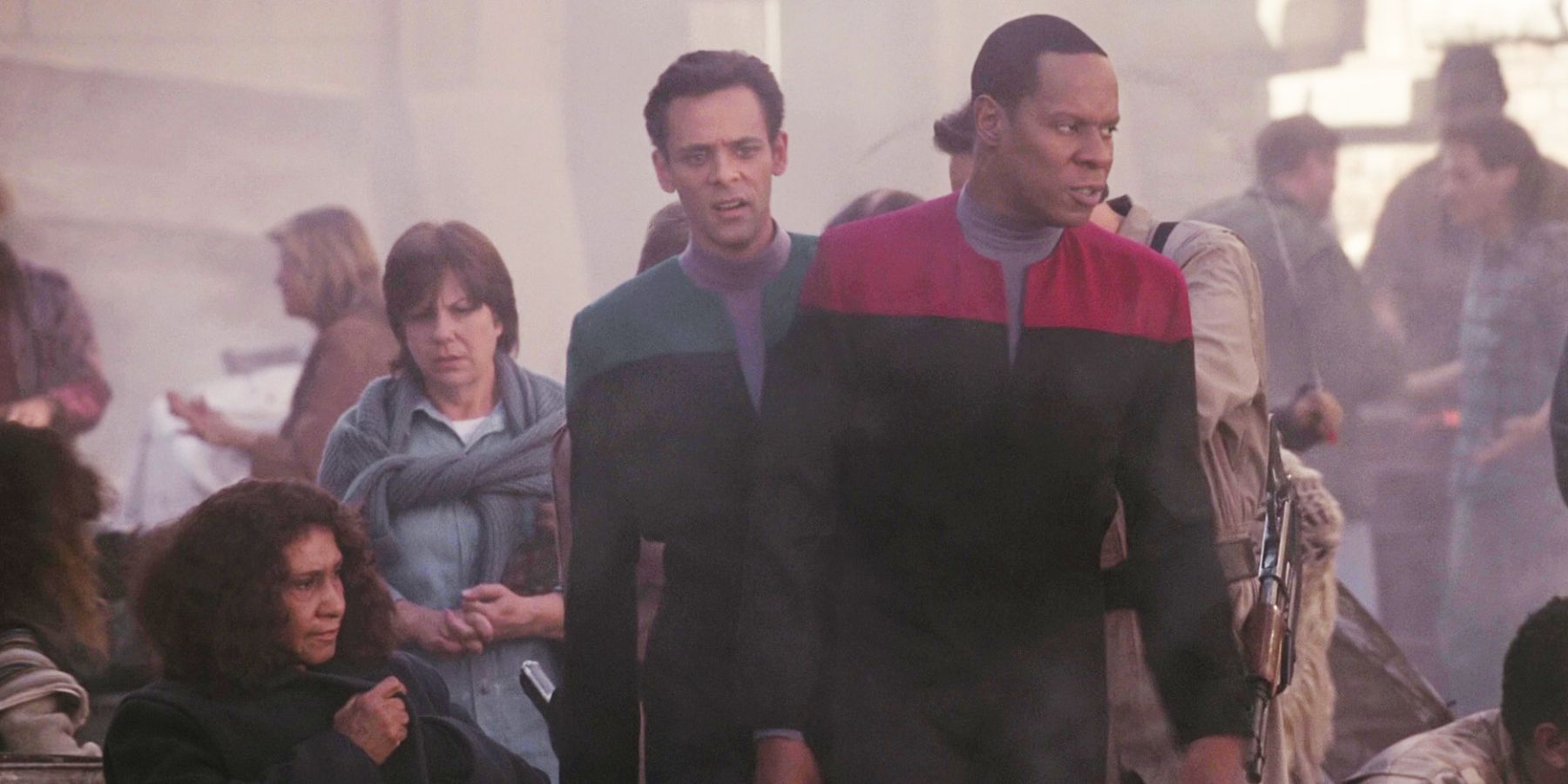Summary
- Star Trek: DS9's "Past Tense" sheds light on homelessness, reflecting societal issues from 2024 in a poignant way.
- The episode explores the struggle of governmental initiatives amidst larger external factors for homeless populations.
- Picard season 2 mirrors DS9's commentary, highlighting social inequalities with an eerie resemblance to reality.

The year is 2024, and I cannot believe that we're living in an episode of Star Trek: Deep Space Nine - and not in a good way. Like its 1990s contemporaries, DS9 was set in the 24th century, and so the Federation's utopian ideals were something to aspire to when I was watching as a kid. As Gene Roddenberry had always intended back in the 1960s, Star Trek TV shows present us with a hopeful vision of the future that challenges us to be better. Sometimes these lessons can be clunkily delivered, but other times Star Trek can provide incisive commentary on our times.
"Past Tense", a season 3 two-parter and one of the best Star Trek: DS9 episodes is one such story that incisively comments on the time in which it was written. In "Past Tense", Commander Benjamin Sisko (Avery Brooks) and Dr. Julian Bashir (Alexander Siddig) travel back in time to 2024, where they experience life inside one of San Francisco's Sanctuary Districts. While writer Robert Hewitt Wolfe had always wanted to tackle the issue of LA's homeless population in DS9, his choice to set the episode in 2024 has given "Past Tense" a contemporary resonance that reflects how little we've learned.
We’re Living In The Year And Plot Of Star Trek: DS9’s “Past Tense”
In Star Trek: Deep Space Nine season 3, episodes 11 & 12, "Past Tense", Sisko and Bashir are stranded in 2024 in the lead-up to the historic Bell Riots. In Robert Hewitt Wolfe and Ira Steven Behr's dystopian vision of the United States in 2024, America's unhoused population are held in Sanctuary Districts. The Sanctuary Districts were supposed to give San Francisco's homeless people a roof over their heads while city representatives helped to find them employment and permanent housing. While theoretically a good idea, the increasing number of homeless people in California has led to overcrowding of the Sanctuary Districts.
...in theory, one of Star Trek: DS9 's Sanctuary Districts could work, but "Past Tense" makes the astute point that such initiatives are at the mercy of much larger external factors.
Six years ago, I used to run movie nights in a homeless shelter in London that gave people experiencing homelessness their own room and board. As well as providing accommodation and food, the charity also helped the shelter's residents to secure further education, medical treatment or job opportunities to help them escape the cycle. The movie nights were designed to facilitate discussion among the residents, and I was often moved by how cinema could allow them to discuss their own experiences of homelessness.
So, yes, in theory, one of Star Trek: DS9's Sanctuary Districts could work, but "Past Tense" makes the astute point that such initiatives are at the mercy of much larger external factors. The charity I volunteered with was reliant on charitable donations and dwindling government funding to do the work. For example, following the 2008 financial crisis, the UK government embarked on swingeing austerity cuts that slashed funding for vital resources like social care at the same time that people lost jobs and needed those initiatives more than ever. Sixteen years and a pandemic later, and life on Earth is eerily similar to DS9's "Past Tense".
The original pitch for "Past Tense" was entitled "The Cold and Distant Stars", which depicted Sisko as a homeless man in 1994 who had dreams of being commander of a space station. This later factored into the classic DS9 episode "Far Beyond the Stars" in season 6.
Los Angeles’ Homelessness Problem Has Got Worse, Not Better Since DS9
30 years ago, when Robert Hewitt Wolfe and Star Trek: DS9 showunner Ira Steven Behr were conceiving "Past Tense", a Los Angeles Times front page headline announced: "Homeless Camp Weighed In L.A. Industrial Area". The city's proposal was criticized as "nothing but a prison" by Alice Callaghan, director of social service center Las Familias del Pueblo. I'm struck by the eerie similarities between Ira Steven Behr and Robert Hewitt Wolfe's dehumanizing dystopia and contemporary Los Angeles and so was Alexander Siddig, who reflected on "Past Tense" in the Star Trek: Deep Space Nine Companion:
"I hadn't realized the country was so depressed as to need it, but the episode was almost a cinematic version of that statement by the L.A. Council. "
Star Trek: Deep Space Nine season 3, episode 11, "Past Tense, Part I" aired on January 8th, 1995. Just over five months earlier, a Los Angeles Times report estimated that on any given night there were "between 43,233 and 77,143 people who are homeless" in LA County. 30 years later, and the figure for Los Angeles County is at the extreme end of the 1994 LA Times report, with the Los Angeles Homeless Services Authority estimating in January this year that 75,518 people are experiencing homelessness in the county. On top of this, there are an estimated 46,260 people homeless in Los Angeles city.
Star Trek: Picard Season 2 Returned To DS9’s “Past Tense”

In Star Trek: Picard season 2, Admiral Jean-Luc Picard (Patrick Stewart) and the crew of the La Sirena travel back in time to 2024 to foil the plotting of Q (John de Lancie). While never explicitly confirmed in the dialog, Commander Rafaela Musiker (Michelle Hurd) finds herself in a homeless village that bears similarities to the Sanctuary District from Star Trek: Deep Space Nine. In Picard season 2, episode 3, "Assimilation", Raffi had a similarly disillusioned perspective on 2024 as Sisko and Bashir in DS9, observing:
"You know, I've never been able to understand how a society could exist with so many contradictions and not collapse sooner than it did."
It was depressing to watch Star Trek: Picard season 2 because the near-future of 2024 with its large homeless villages and violent immigration officers felt very close to home. Rather than the dystopian sci-fi of Star Trek: Deep Space Nine's "Past Tense", the social inequality and poverty in Picard season 2 felt less like Star Trek and more like a documentary. However, while we may have failed to learn the lessons of DS9's "Past Tense" over the past three decades, both it and the plot of Picard season 2 prove that we still have an opportunity to turn things around for the better.
"It's not that they don't give a damn, Doctor. It's that they've given up."

Although it was written 30 years ago, Star Trek: Deep Space Nine season 3, episode 11, "Past Tense, Part I" has a moment that seems to sum up our own experiences in 2024. When Sisko tells Bashir that people in the 2020s have "given up", it's hard not to feel like Avery Brooks is talking about us. In the past four years, we've endured the COVID-19 pandemic, devastating conflicts in Ukraine and Palestine, and a massive cost of living crisis. It's overwhelming, and as we struggle to put food on the table day to day, it can be hard to lift our heads above water to see outside our own experience.
Both the Bell Riots in Star Trek: Deep Space Nine and the Europa mission in Star Trek: Picard season 2 helped to pave the way for the utopian ideals of Starfleet and the Federation.
In both Star Trek: Deep Space Nine and Star Trek: Picard season 2, huge epoch-shifting events help to change things for the better. In "Past Tense", the Bell Riots lead to a radical rethink of how to better meet the needs of Los Angeles' homeless population. In the real-world, the COVID pandemic in 2020 led the UK government to implement several measures to protect the country's homeless population (via Crisis) from Coronavirus. This just goes to show that, in the right circumstances, governments can rethink their policies on their unhoused citizens and how they solve the root causes of homelessness. We just need to build on that initiative so it's the rule rather than the exception.
Star Trek: Picard season 2's Europa mission brought back a mysterious microorganism that aided humanity in solving the climate crisis. NASA's real-life Europa mission will launch in October this year, in an attempt to find out if Jupiter's moon could support life. Both the Bell Riots in Star Trek: Deep Space Nine and the Europa mission in Star Trek: Picard season 2 helped to pave the way for the utopian ideals of Starfleet and the Federation. Hopefully, in the real world, the findings of the Europa mission and a more holistic approach to homelessness can build our own more utopian future.



